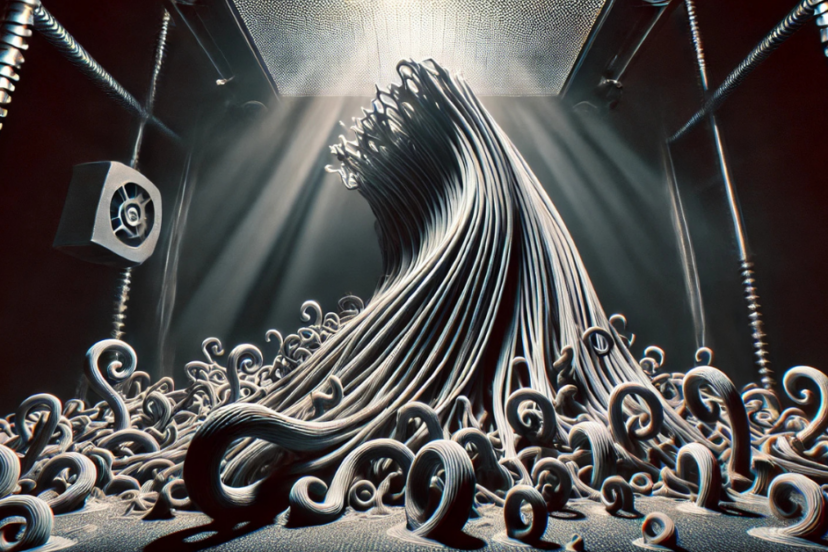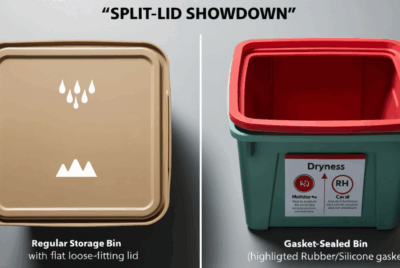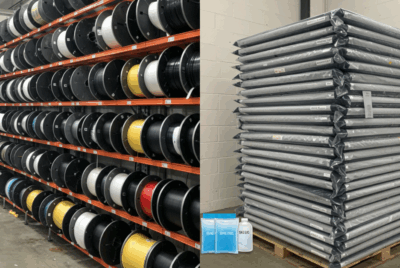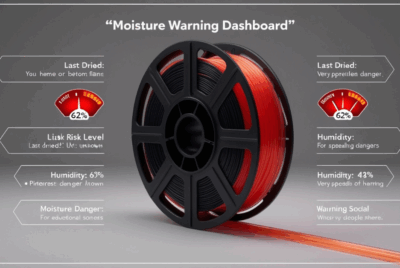How do I prevent Nylon warping?
Preventing warping when printing with Nylon can be a challenge due to its high tendency to shrink and contract as it cools. However, there are several strategies you can use to minimize or prevent warping, ensuring your Nylon prints are successful. Here are the most effective ways to prevent warping with Nylon filament:
1. Use a Heated Print Bed
- Why It Helps: A heated bed helps to maintain the first few layers of the print at a stable temperature, reducing the risk of warping. This ensures the layers stay attached to the bed as the print progresses.
- How to Do It: Set your heated print bed to around 70°C to 90°C (158°F to 194°F), depending on the specific type of Nylon you are using. Higher temperatures help prevent the material from cooling and shrinking too quickly.
2. Use an Enclosed Printer
- Why It Helps: Nylon is sensitive to temperature fluctuations, which can cause uneven cooling and lead to warping. An enclosure helps maintain a consistent ambient temperature around the print.
- How to Do It: Use a 3D printer with a built-in enclosure or add an aftermarket enclosure to your printer. This keeps the print environment stable, reducing the risk of drafts or temperature changes that can cause warping.
3. Apply Adhesion Aids (Glue Stick, Hairspray, PEI Sheet)
- Why It Helps: Adhesion aids help the first layer of Nylon stick better to the print bed, preventing it from lifting or warping during the print.
- How to Do It:
- Glue Stick: Apply a thin, even layer of glue stick to the print bed.
- Hairspray: Lightly spray a thin coat of hairspray on the print bed. Use it in a well-ventilated area.
- PEI Sheets: Use PEI (Polyetherimide) sheets, which provide excellent adhesion properties and are known to help prevent warping.
- Benefit: These methods improve the bed adhesion of the first layer and provide a more stable base for the print.
4. Level the Print Bed Properly
- Why It Helps: An uneven or improperly leveled print bed can cause the first layer to be too close or too far from the bed, leading to poor adhesion and potential warping.
- How to Do It: Use your printer’s automatic bed leveling function or manually level the bed to ensure an even gap between the nozzle and the bed across the entire print surface. This will help the first layer adhere evenly.
5. Use a Brim or Raft
- Why It Helps: A brim or raft increases the surface area of the first few layers, helping to anchor the print to the bed and reduce the chances of warping.
- How to Do It:
- Brim: Add a few extra lines around the base of your print (usually 5-10 lines) to provide additional adhesion.
- Raft: Use a raft, which consists of several layers of material that provide a solid foundation for the print. Once the print is complete, the raft can be removed.
- Benefit: Both options help prevent the edges from lifting by increasing adhesion and providing more surface contact with the bed.
6. Print Slowly and Use Lower Speeds for the First Layer
- Why It Helps: Printing slowly, especially during the first few layers, helps to improve adhesion and reduce the chance of warping. Slower speeds give the filament more time to properly adhere to the bed and bond with the layers beneath it.
- How to Do It: Reduce the print speed for the first layer to around 30% of the normal print speed, allowing it to lay down more evenly and with better adhesion.
7. Control Cooling and Use Minimal Fan Speed
- Why It Helps: Rapid cooling can cause Nylon to warp due to thermal contraction. Avoid using a cooling fan or use it sparingly to allow the print to cool more gradually.
- How to Do It: Set the cooling fan to a low setting or turn it off for the first few layers. After the first few layers are printed, you can increase the fan speed, but keep it at a low setting overall.
- Benefit: This helps reduce the chance of uneven cooling, which is a common cause of warping.
8. Use Nylon with Additives (e.g., Carbon Fiber Reinforced Nylon)
- Why It Helps: Some types of Nylon filament come with additives like carbon fiber, which reduce the filament’s tendency to warp and improve print stability.
- How to Do It: Consider using carbon fiber-reinforced Nylon or other Nylon blends designed to reduce warping and improve print quality.
Benefit: These additives increase the strength and rigidity of the material, making it less prone to warping.
9. Print with a Thick First Layer
- Why It Helps: A thicker first layer helps improve adhesion to the bed and prevents the edges from curling up during printing.
- How to Do It: Increase the first layer height or thickness in your slicer settings, typically by around 0.2mm to 0.4mm for a stronger bond to the bed.
- Benefit: A thicker first layer gives the print a solid foundation, which reduces the risk of warping.
10. Use a Strong Print Surface
- Why It Helps: Certain print surfaces can help with adhesion, preventing Nylon from warping or lifting during printing.
- How to Do It: Use build surfaces such as PEI sheets, glass, or BuildTak for better adhesion and smoother prints.
- Benefit: These surfaces are specifically designed to work with high-temperature materials like Nylon and improve first-layer adhesion.
Summary
Preventing Nylon warping involves using a heated bed, controlling environmental conditions (using an enclosure), improving adhesion (with adhesion aids like glue stick or hairspray), and managing printing settings (such as print speed, cooling, and first layer settings). Additionally, using a raft or brim, as well as considering Nylon blends with additives, can significantly reduce warping during printing. By applying these strategies, you can achieve high-quality, distortion-free prints with Nylon filament.




